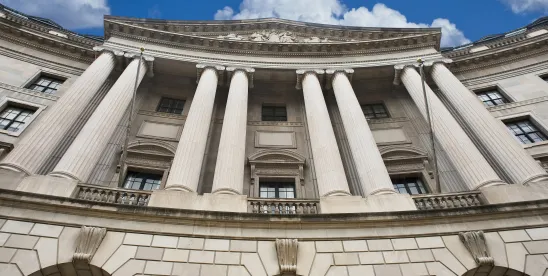Within the first five months of 2024, the United States Environmental Protection Agency (EPA) finalized two rules under section 6(a) of the Toxic Substances Control Act (TSCA) that would impose extensive bans and restrictions on uses of chrysotile asbestos and methylene chloride. Aside from a 2019 EPA rule prohibiting the manufacturing (including importing), processing, and distributing in commerce of methylene chloride for consumer paint and coating removal, these are the first two broadly applicable risk management rules that EPA has promulgated since Congress amended TSCA in 2016 to manage unreasonable risks to human health or the environment through broad restrictions on existing chemicals.
These two rules have already been challenged in the courts. After industry, labor, and environmental groups filed numerous lawsuits across four circuit courts, a federal judiciary panel consolidated all challenges to EPA’s final chrysotile asbestos rule into the Fifth Circuit Court of Appeals. Also, two companies have filed a joint petition for review in the Fifth Circuit challenging EPA’s final methylene chloride rule, and an environmental group has challenged the rule in the Ninth Circuit.
Implementation of these two rules may provide insight into the following proposed and final risk management rules that EPA expects to roll out on the following timeframe:
EPA Ban on Chrysotile Asbestos
On March 28, 2024, EPA issued its final rule under section 6(a) of TSCA to ban chrysotile asbestos. EPA determined that it is the only type of asbestos where import, processing, and distribution in commerce for use is known, intended, or reasonably foreseen in the US. The final rule bans all known uses of chrysotile asbestos and imported products containing it, which include diaphragms in the chlor-alkali industry, sheet and other gaskets, oilfield brake blocks, and aftermarket automotive brakes, linings, and other vehicle friction products.
For the processing and commercial use of chrysotile asbestos for chrysotile asbestos diaphragms in the chlor-alkali industry and for the commercial use of chrysotile asbestos sheet gaskets for titanium dioxide production, EPA’s final rule imposes interim workplace protections controls. The interim workplace controls include an existing chemical exposure limit (ECEL) of 0.005 fibers/cubic centimeter as an 8-hour time weighted average, exposure monitoring, regulated areas, respirators, and exposure control plans.
The rule’s prohibitions and phase-in dates for chrysotile asbestos are described below. Notably, EPA also exempts certain products that are already installed for use as of their respective compliance dates.
Methylene Chloride Rule
On May 9, 2024, EPA published its final risk management rule on methylene chloride, which prohibits certain conditions of use, allows other uses to continue under a rigorous worker protection program, and provides extended timelines for some uses. These restrictions do not apply to the manufacture, import, processing, and distribution of methylene chloride for consumer use in paint and coating removal, which has already been prohibited under another EPA TSCA regulation.
The use prohibitions are outlined below:
Exemptions from Methylene Chloride Ban
Notably, EPA included a de minimis exemption that renders the final rule’s requirements inapplicable to products containing less than 0.1% methylene chloride by weight. Additionally, the manufacturing, processing, or distribution of methylene chloride solely for export is exempted from all of the final rule’s prohibitions except for the worker chemical protection program requirements, which still apply to methylene chloride manufacturing and processing for export. No similar exemptions were included in the asbestos final rule.
The final rule for methylene chloride also exempts certain conditions of use from the bans and allows them to continue so long as they adhere to a rigorous workplace chemical protection program (WCPP), which include an ECEL, regulated areas, exposure monitoring, exposure control plan, respiratory protection, dermal protection, and worker training.
Finally, EPA requires that any person who manufactures or imports methylene chloride for any use before October 7, 2024, or processes or distributes methylene chloride for any use before December 4, 2024, to provide downstream notification through the safety data sheet for methylene chloride or the methylene chloride-containing product.
These two rules serve as guideposts for the types of restrictions EPA may include in future TSCA risk management rules. Companies should assess current compliance approaches and prepare for potentially more bans and restrictions, including WCPP requirements and ECELs, for uses of other chemicals which EPA is evaluating under TSCA.









 />i
/>i

